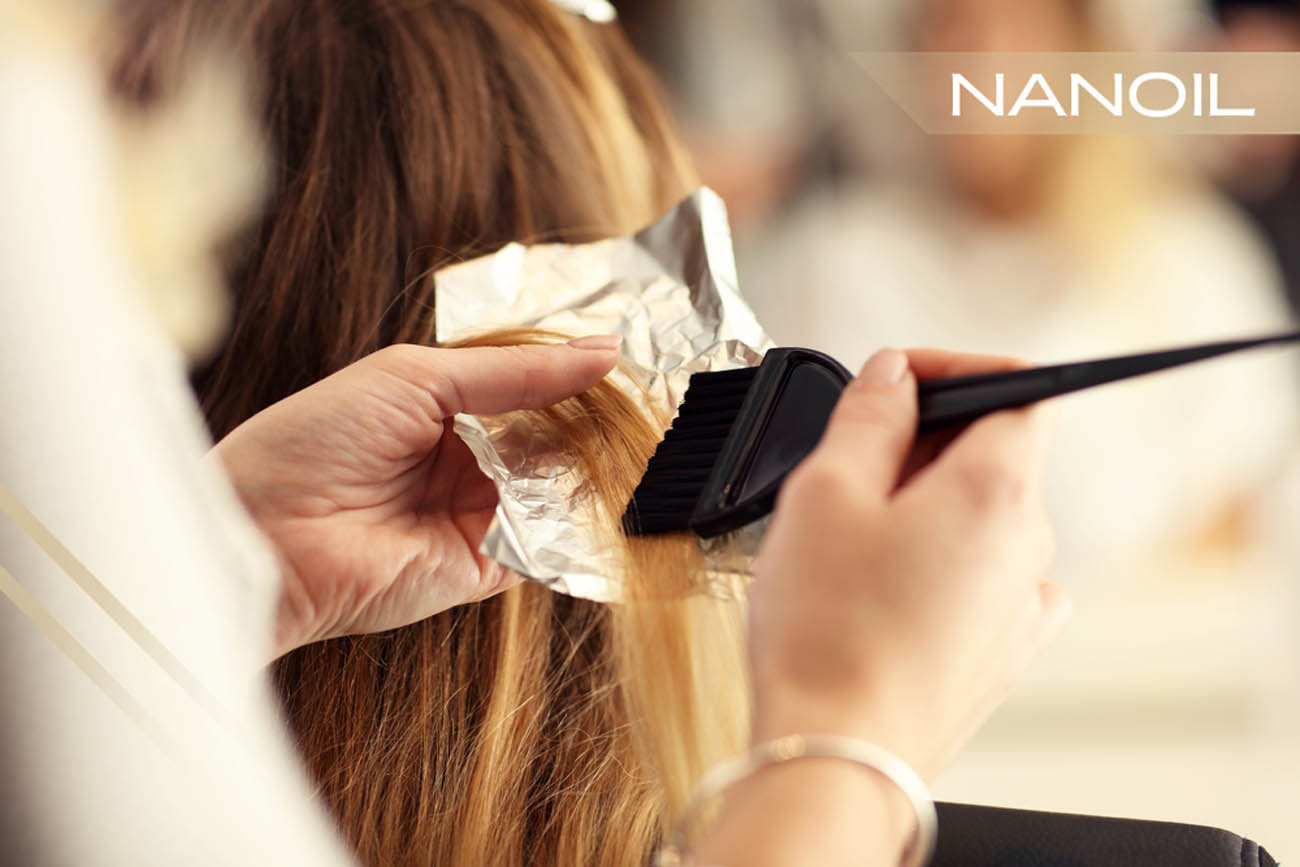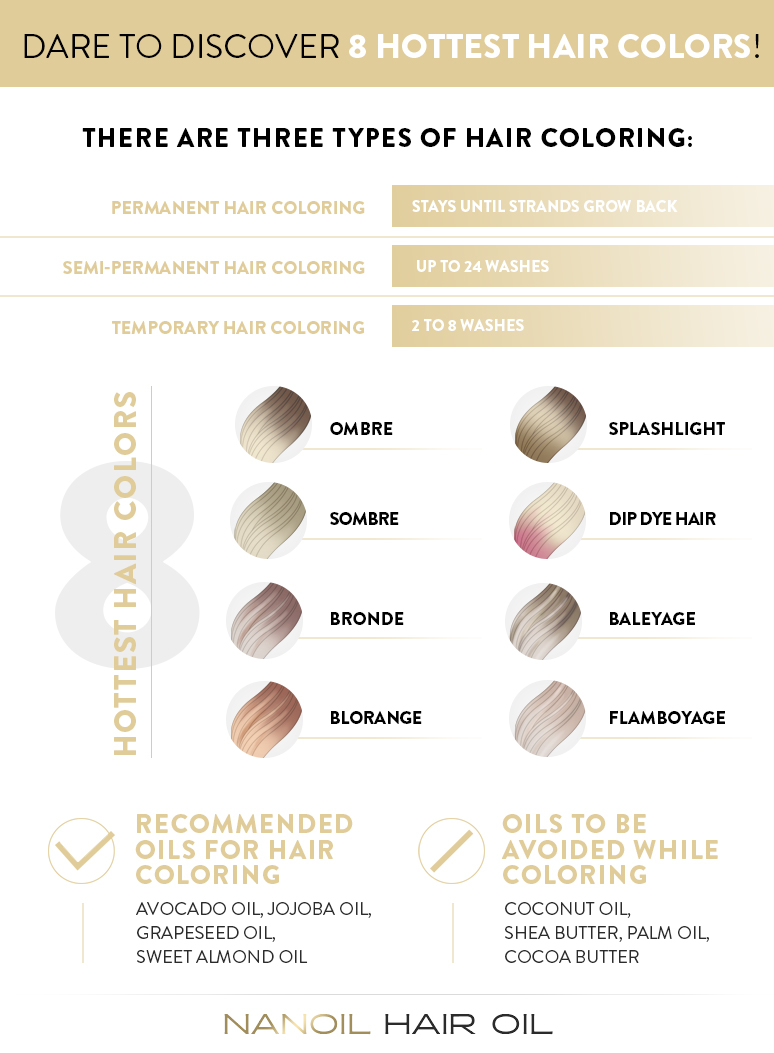- NANOIL Products
- Oils
- Face serums
- Hair masks
- Shampoos
- Hair conditioners
- Hair styling
- Hair Porosity Test
- Blog
- Contact

Hair styling isn’t only about making braids and buns. It’s playing with colours, ranging from the subtle to juicy ones. Hair coloring follows certain rules but there’s such a diversity in color trends that everyone will find something made right for them. With less or more intense effect.
Think. Do you know everything about hair coloring? Do you know the latest trends? Do you know the differences between sombre, ombre and bronde? If not, you must read on. You’ll find info on the hottest types of coloring and check if you’ve believed in hair coloring myths.

What is hair coloring? A simple question and an answer will be also straightforward. Hair coloring (dyeing) includes changing hair color (natural or previously changed) using chemicals. We can choose the target hue but a hair dye can change the color only by a few shades. That’s why going blonde from e.g. dark brown is a completely different method known as bleaching.
There are three types of hair coloring:
Attention! We’re dispelling coloring myths! They’re still repeated by lots of women and crop up on every discussion group and hair care blog. Surprisingly, they have no scientific support. False theories saying hair coloring is harmful and boosts hair loss. You believed them as well?
Hair loss caused by coloring is a common myth. There’s no connection between hair coloring and hair loss. Choosing an unsuitable and too strong product can irritate a sensitive scalp but it doesn’t affect the firmly rooted hair follicles. Hair coloring influences only the part of hair that you can see – hair fibre. It’s indifferent to hair bulbs and follicles.
You can hear opinions that it’s impossible to dye damaged hair. Everything is possible yet entails some risks. Over-processed hair absorbs much more pigment so the effect will be long-lasting and intense. Sadly, damaged hair is weak and has no protection from the action of chemicals. If you go for coloring damaged hair, you must use a delicate product - less durable yet safer.
Does coloring damage your natural hair color? Contrary to many opinions, it doesn’t. Although the pigment penetrates hair fibre and gives a new color, the amount of natural pigment stays the same in growing hair. The natural shade at the roots seems less intense and dull when compared to the dyed color of the rest of your hairdo.
When you shampoo your hair, you remove natural fats protecting the scalp from harmful factors. It’s best if you wash your hair in the evening before coloring so that lipid barrier has time for rebuilding and providing hair better protection during the treatment. After coloring, you can wash hair a day later with a normal shampoo; detergents included in shampoos can weaken the effects of the treatment, wash the fresh pigment out and make the color fade more quickly.
Ombre, baleyage or maybe splashlight? Nowadays, the abilities of hairdressers go beyond our imagination connected with hair looks. Coloring isn’t only applying a one-color product to hair. From contrasting highlights or gradient ombre we’ve moved to sombre, bronde, etc. What makes them different? Here’s the list of most popular trends.
How to use oils in hair coloring? It’s possible yet such innovations trigger lots of controversies. Interestingly, oils can make the color long-lasting or less durable. Using the right technique is the key to achieving the desired result. The oil for dyeing should be appropriately picked and have certain properties (it must moisturise, regenerate, reinforce and protect). There are oils you should avoid during the treatment but you can also find the ones worth choosing.
How to use oils during hair coloring the right way? Adding a few drops of a favourite oil to a hair dye is the most popular. The oil enriches the dye with valuable nutrients and provides hair and scalp with lipid balance. The cosmetic market offers ready-made oil-infused hair dyes (usually with argan oil). Another idea is applying an oil an hour before coloring but in small quantities to avoid oiliness and overburdening. We leave the oil in because it protects our scalp from chemicals included in the dye. Coloring hair with oils prevents dry strands and irritated scalp. If you use the oil in a proper way, it will intensify the color you strive for.
You should do another hair oiling more or less week after the treatment to enhance the color.
Leave your email address and we ll notify you when it s back in stock.
Comments: #0